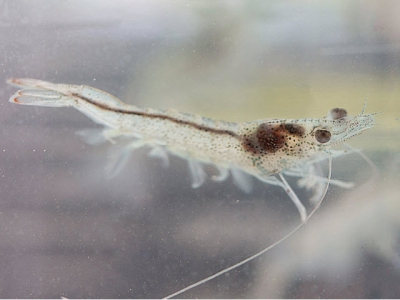Could listening to shrimp improve RAS production?

A fully-funded PhD that is looking to use acoustic technology to understand shrimp behaviour in recirculation aquaculture systems (RAS) is currently being offered by the University of St Andrews.
The project will use cutting-edge technologies to assess shrimp behaviour in RAS
Shrimp and prawns are seen as promising candidates to be cultured in RAS, but the technology is new and requires better understanding and refinement to reach its full potential.
Understanding the behaviour of cultured animals is key to optimising production, assisting with best husbandry practise and maximising welfare. The PhD will involve applying new video and acoustic technological approaches to improve understanding of whiteleg shrimp (Litopenaeus vannamei).
Crustaceans have not traditionally been thought of as ‘vocal’ animals, but there is a growing awareness of the importance of sound to crustaceans and it may be possible to move towards on-demand feeding if there are auditory cues to hunger.
The project will involve using stereo videography to observe 3D swimming activity of prawns in tanks, and document aspects of group behaviour including nearest neighbour analysis, for example as has been done for Antarctic krill (Murphy et al. 2019). This will inform optimisation of stocking densities.
Crustaceans have not traditionally been thought of as ‘vocal’ animals, but there is a growing awareness of the importance of sound to them (Coquereau et al. 2016) and it may be possible to move towards on-demand feeding if there are auditory cues to hunger.
Sequencing of the gut microbiota under different culture conditions will provide an opportunity to interrogate linkages to the observed animal behaviours (Soares et al. 2019). This raises the prospect of beneficially influencing the shrimp phenotype through manipulating the microbiota, such as by probiotic supplementation or feed composition. The video and acoustic sampling and microbiota description will deliver very large volumes of data. We will explore application of cutting-edge computer vision and AI techniques to extract patterns from data and maximise the inferences that can be made from the behavioural observations.
All data together should lead to development of improved methods for RAS cultivation, that in turn will deliver higher yields from more efficient, high-welfare aquaculture for a green and prosperous bioeconomy.
Có thể bạn quan tâm
 A breath of fresh air - how nanobubbles can make aquaculture more sustainable
A breath of fresh air - how nanobubbles can make aquaculture more sustainable Devices that produce nanobubbles are becoming increasingly popular in a range of aquaculture operations, with a growing number of studies supporting their value
 Recycling waste from the world's largest closed-containment salmon farm
Recycling waste from the world's largest closed-containment salmon farm American Aquafarms, which plans to build a 36,000 tonne capacity closed containment salmon farm off the coast of Maine, has signed an agreement
 Researchers use personality profiling to improve lumpfish performance
Researchers use personality profiling to improve lumpfish performance Scientists at the University of Swansea have designed a series of behavioural tests to build personality profiles for lumpfish in hopes of determining